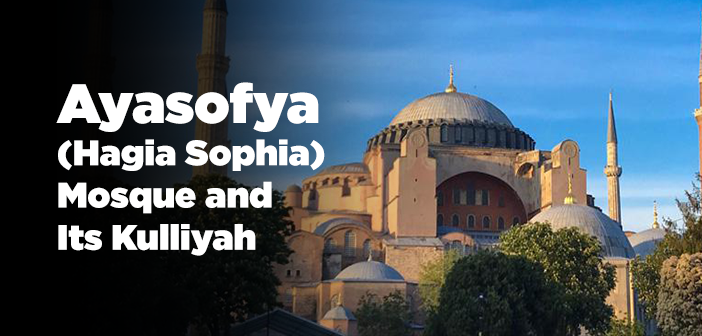Where is the beyazid mosque in istanbul? When was beyazit mosque built?
In the architecture of our ancestors, not even a piaster was wasted. Many dervishes, workers and masters would do their best in their works in order to fully deserve the earned money, and also for they believe that the Greatest Artist desires as such. This was infused into the business manners of non-Turkish and non-Muslim minorities’ masters in the same vein (minorities from some nations like Armenians and Greeks) (Nihad Sami Banarlı, İstanbul’a Dair, p.24)
Some districts in Istanbul are named after the mosques built within their borders. Beyazıd Mosque is one of them. The district in which it is located has taken its name from the mosque.
It was constructed by Sultan Beyazıd II between 1500 and 1505 years. The identity of its architect is controversial. Three names are mentioned in sources as its architect, Mimar Hayreddin, Mimar Kemaleddin or Yakubshah b. Sultanshah.
There is a mosque, a soup kitchen, a primary school, guesthouses, a madrasa, a bathhouse and a caravansary in Kulliya of Beyazıd. Constituent buildings of Kulliyah are not symmetrical as in the Kulliyah of Fatih. They were constructed in a scattered form within the Kulliyah.
The dome of the mosque is 16.75 m in diameter. The minarets of this mosque are unique to it and distinguish it from the other mosques. Contrary to the building style of the other mosques in Istanbul, the distance between the minarets of Beyazıd Mosque is further. The distance between the two minarets is 79 meters.
Stonemasonry, woodworking and the stained glasses of the mosque are precious pieces of art. Materials remaining from Byzantine were used in the production of the courtyard upholstery and pillars of the shadirwan. It is especially possible to see traces of Byzantine Empire on the pillars of the shadirwan.
Buildings of the soup kitchen and the caravansary that are situated on the left side of the mosque and survived until today currently serve as Beyazid State Library.
The Poor Man with a Rich Heart
A remarkable incident, occurred during the construction of the mosque, is narrated as follows:
Daily wages of the construction workers of the mosque used to be left at a certain place in a pot. Then the workers would go to that place and pick their wages up from this pot. However, there was always the amount of one worker’s wage left in it at the end of the day. First, they thought that they were leaving the extra money by mistake, so they checked the accounts. However, they did not see any mistake in the accounts. When they investigated why there had been extra money left in the pot, it was understood that a worker was not taking his wage. They asked him why he had not taken it. The worker shyly responded that:
– I have no wealth. For this reason, I could not do charity work in this temporary world as much as I wish. This was making me sad. I decided that I would work for construction of this mosque free, so this would be my charity in this world.
They said to this poor man with a rich heart:
– Gentleman! This mosque is the donation of the sultan. Therefore, you should take your rightfully earned wage. Work here physically; but get your due and donate it wherever you want! (Osman Nuri Topbas, Tarihten Günümüze İbret Işıkkları, p. 208)
One Time in a Week
Sultan Beyazıd II occasionally came and worked in the construction of his own mosque. The following incident is narrated in respect to this matter.
One day while Sultan was working, something strange attracted his attention. One of the walls built by a worker was rising faster than the other ones. The wall master was tirelessly working apace. Sultan Beyazıd immediately realized the reason for his speed. He knew that the man was Khidr (pbuh). He slowly approached him, held his arm and said that:
– If you do not promise me that you will come to this mosque in every prayer time, I will shout and tell everyone here that you are Khidr.
Khidr apologized and stated that it is impossible to come for every prayer time. Sultan Beyazıd had no intention to leave Khidr before getting a promise from him. In the end, they reached an agreement that he would perform one prayer in every week in this mosque. From that day on, it has been believed that Khidr comes to perform one prayer in every week to Beyazıd Mosque. According to the narrations, he performs his prayer somewhere around the red-girdled minaret. (Osman Nuri Topbas, Abide Şahsiyetleri ve Meseleleriyle Osmanlı, p. 139)
Source: Harun Kırkıl, Read About and Travel Around ISTANBUL, Erkam Publications
Ayasofya (Hagia Sophia) Mosque and Its Kulliyah




